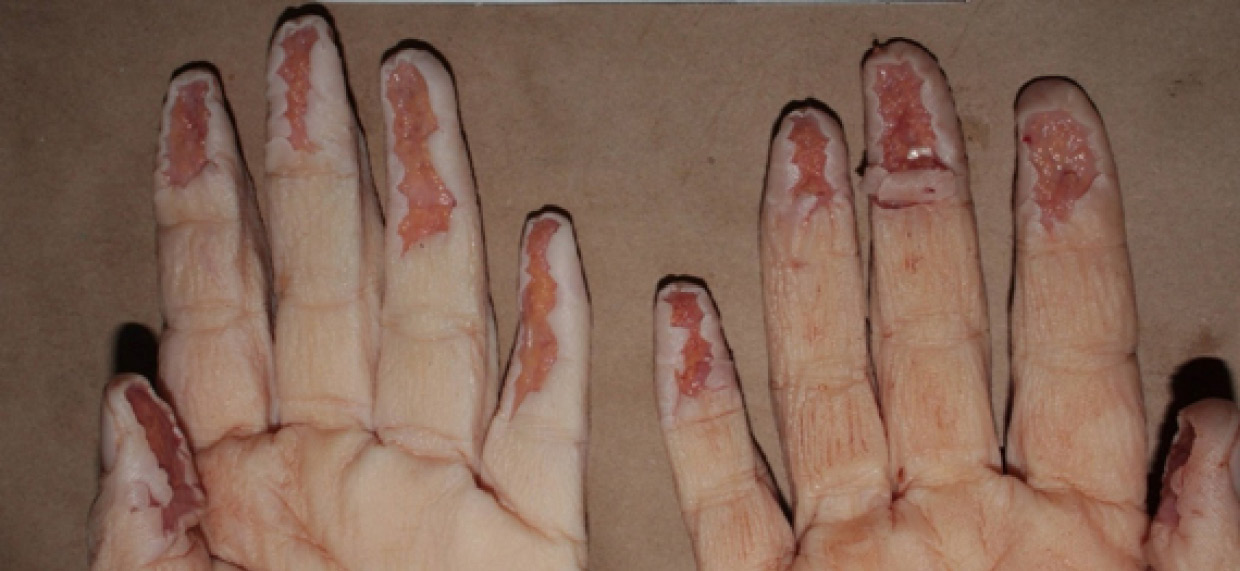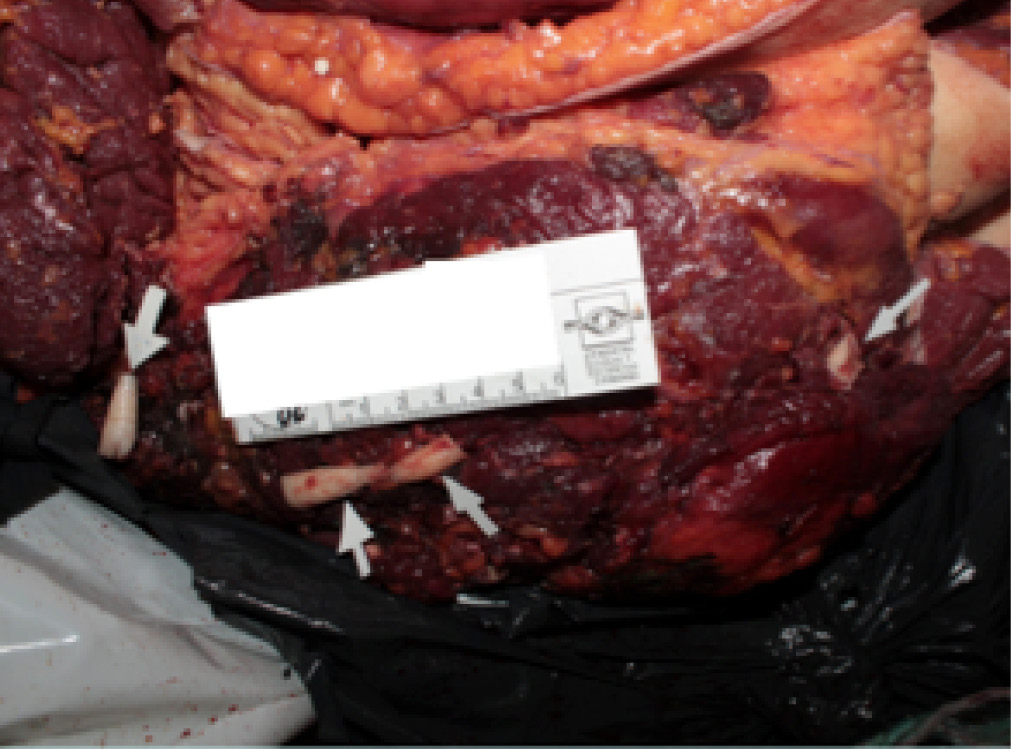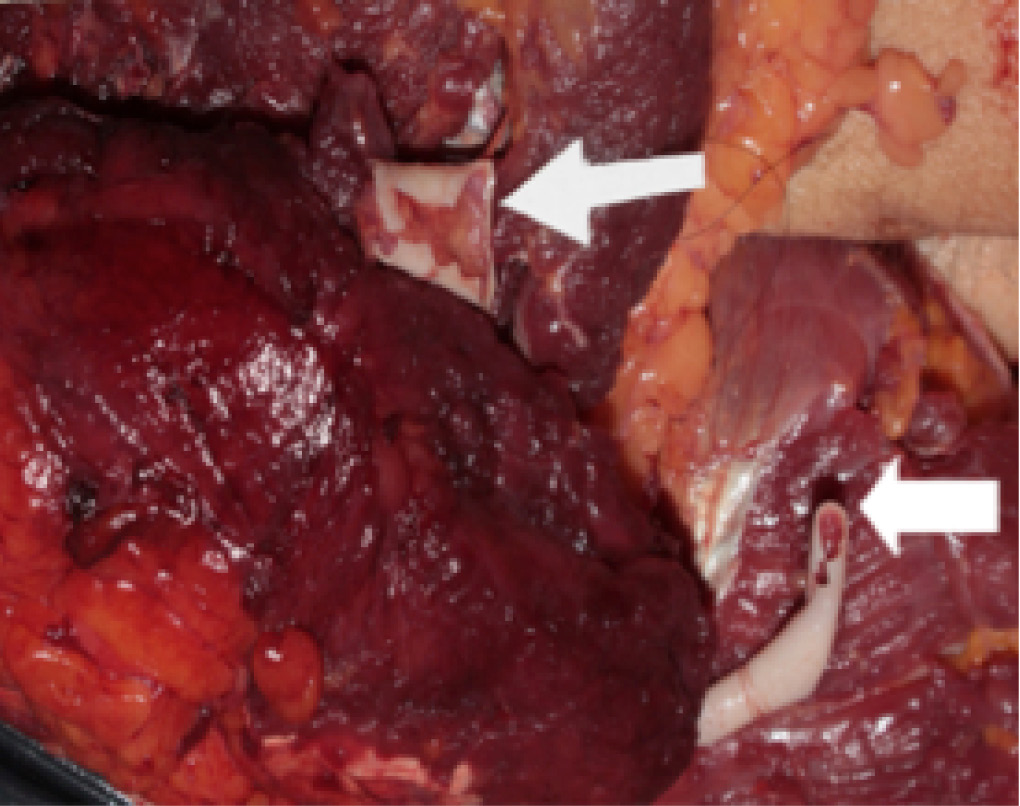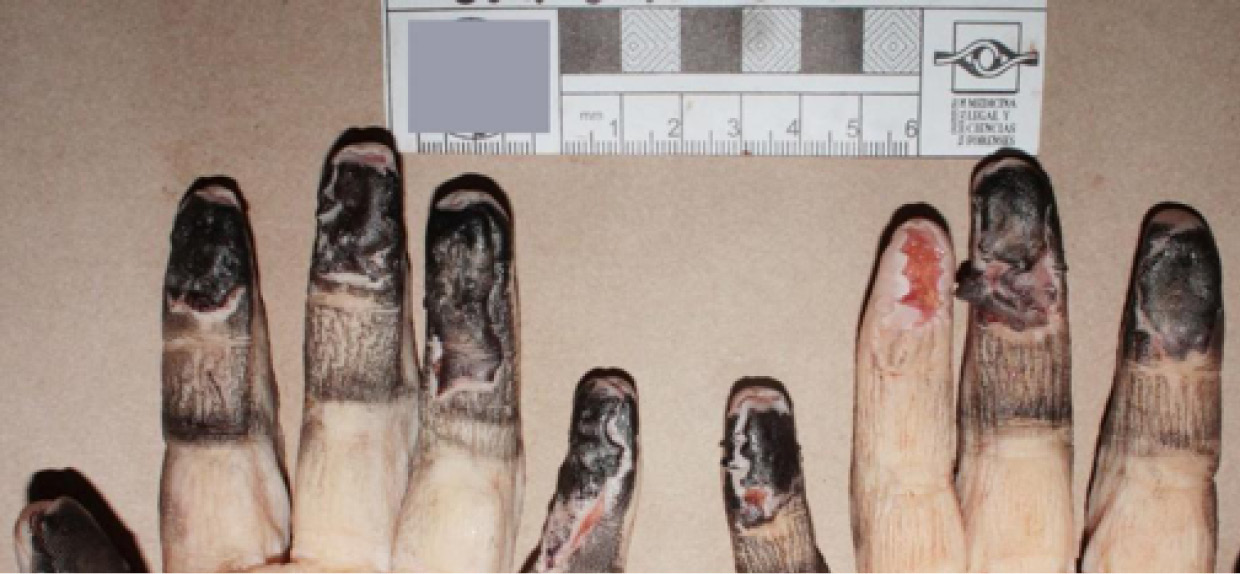RECOVERY OF FINGERPRINTS AND IDENTIFICATION OF A DISMEMBERED BODY: A CRIME OF PASSION
National Institute of Legal Medicine and Forensic Sciences, Special Edition
Mónica I. Garzón-Pineda
Professional fingerprint technician.
National Institute of Legal Medicine and Forensic Sciences.
Dermatoglyphics Laboratory.
- Bogotá Office -
Bogotá, D.C. - Colombia.
Correspondence to:
Mónica I. Garzón-Pineda.
Dermatoglyphics Laboratory,
National Institute of Legal Medicine and Forensic Sciences.
Email: migarzon@medicinalegal.gov.co
SUMMARY
The body of a young woman was dismembered and placed in several plastic bags and left on a public road. Her death was the result of a crime of passion. Upon medico-legal examination, no skin was found on the palmar side of the distal and medial phalanges of all finger pads on both hands (which were also dismembered). Through the process of finger pad recovery, it was possible to find tissues that had adhered to the body and reposition the exactly on each finger to recover fingerprints. Finally, the victim was identified using the conventional fingerprinting process.
Keywords: Finger pads; Dismemberment; Identification of bodies; Fingerprints; Dermatoglyphics.
PRESENTATION OF THE CASE
The National Institute of Legal Medicine and Forensic Sciences (INMLCF) received various plastic bags, usually used for garbage disposal, collected from a road during the inspection of a cadaver carried out by the technical investigations team of the office of the Prosecutor General of Colombia (CTI-FGN). These bags contained the body parts of a recently deceased woman who had been dismembered. Upon preliminary medico-legal evaluation, the body was found to be dismembered at the ankles, knees, wrists, elbows, neck, lumbar spine and hands. The hands were missing sections of the skin corresponding to fingerprints (Figure 1); nine of the resected fragments were adhered to the trunk of the body and multiple cuts were observed on her face, and her nose was amputated.

Fig 1. View of the palm of the hands from which the skin on the fingers had previously been extracted.
Source: García & M. I. Pineda (INMLCF)
METHODOLOGY
Nine small, whitish and difficult to find skin fragments belonging to the finger pads were found adhered to the trunk of the body (Figures 2 and 3) and recovered. The strips of skin were rolled up due to exposure to the environment. As such, they were rolled out proper observation.

Fig 2. Vista general del tronco del cadáver con los fragmentos de pulpejos adheridos.
Fuente: García & M. I. Pineda (INMLCF)

Fig 3. Vista general del tronco del cadáver con los fragmentos de pulpejos adheridos.
Fuente: García & M. I. Pineda (INMLCF)
The cut patterns on the edges of the fingerprints were carefully studied to establish a relationship between each fragment and the corresponding finger.
In order to reconstruct the whole fingerprint and thereby identify the body, different types of instant liquid adhesives were tested along with Cyanoacrylate composite (Omega- printTM), used to reveal latent prints, in order to find the best adhesive result on the skin of the phalanx and thereby continue in the routine process of fingerprinting and later comparison with National Civil Registry database (Registraduría Nacional del Estado Civil) (1-3).
DISCUSSION AND RESULTS
By localizing and restoring the finger pads, the correct placement of 7 fingerprints was obtained. With the finger prints, identification of the person in question was possible.
With regard to the adhesion of skin fragments to the phalanges, and after trying various liquid adhesives available on the market without achieving the expected result, the cyanoacrylate composite (Omega-PrintTM), often used to reveal latent fingerprints and widely known for its adhesive properties, was used (4). This resin offered optimal results in terms of the adhesion of the finger pads and allowed for an appropriate fixation of each finger print on the recording strips for standard post-mortem fingerprinting (Figure 4).

Fig 4. Palmar view of the hands of the victim prepared for obtaining finger prints and matching.
Source: García & M. I. Pineda (INMLCF)
The edges of the cuts in the finger pads and the marks on the fingers due to the lack of epidermic tissue had particular angular edges that completely coincided with each other and that corresponded with the the marks of the finger the fingerprints in 7 of the 9 fragments analyzed. This indicates that the injuries were caused by a cutting mechanism. In a later review of the hypothesis of the case, the suspect was found to have been employed in a job that used cutting tools, one of which had characteristics that coincided with the marks left on the victim’s fingers.
Having identified the victim, and through the respective genetic study, the investigators were able to establish location of the place of the crime by proving that the blood at the scene belonged to the victim. This linked the suspect (her romantic partner) as the perpetrator of the crime.
Fingerprint matching was done by consulting the database of the National Civil Registry and by comparing the previously scanned images of the fingerprints in question to those of persons already entered into the software (3). For identification, it is essential that the finger pads be correctly positioned. This highlights the importance of recovering the tissue and its correct placement on the corresponding body part.
While the dematoglyphic approach implies implies the development of broadly-known techniques and protocols, in the analysis of each case, the clear responsibility to recur to all possibilities for recovering the tissue is fundamental, even though conventional procedures may have yielded negative results. A great amount of creativity is required along with the occasional use of uncommon elements that allow for obtaining results that conclude —as in this case— with the identification of the victim and thereby a reconstruction of facts from evidence. In this way, it was possible to assist in the administration of justice and the clarification of the events, allowing for the delivery of the body to family members.
REFERENCIAS
1. Martínez J., Londoño M. Camacho H. Corredor L. Polo Z. Procedimiento “Tratamiento de pulpejos”. Bogotá, D.C.: Instituto Nacional de Medicina Legal y Ciencias Forenses; 2011.
2. Martínez J., Garzón H. Instructivo “Toma de necrodactilia”. Bogotá, D.C.: Instituto Nacional de Medicina Legal y Ciencias Forenses.
3. Garzón H., Martínez J. Procedimiento “Verificación de identidad por cotejo dactiloscópico de los cadáveres que ingresan a la sala de necropsias de las direcciones regionales”. Bogotá, D.C.: Instituto Nacional de Medicina Legal y Ciencias Forenses.
4. González-González JM. Cianoacrilato. Definición y propiedades. Toxicidad y efectos secundarios. Aplicaciones en medicina y odontología. Av. Odontoestomatol. 2012:28(2): 95-102. http:// doi.org/9c4.